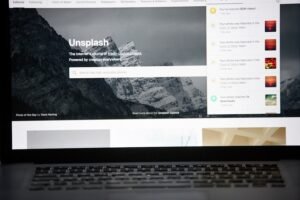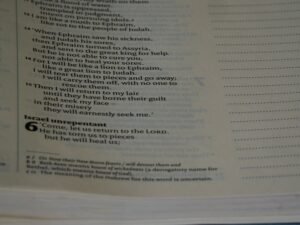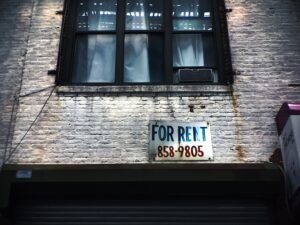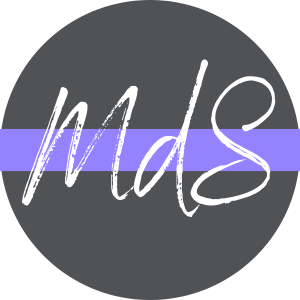In today’s digital age, having a great website is essential for any business, and this holds true for BnBs as well. A well-designed and user-friendly website can be a powerful tool to attract potential guests, showcase your property, and ultimately increase bookings. With the increasing popularity of online travel booking platforms, having a strong online presence is crucial to stay competitive in the hospitality industry.
A great BnB website offers numerous benefits for your business. Firstly, it allows you to showcase your property in the best possible light. You can highlight the unique features and amenities that set your BnB apart from others in the area. This can help potential guests make an informed decision and choose your property over others.
Secondly, a website provides an opportunity to build trust and credibility with your target audience. By including testimonials, reviews, and photos of happy guests, you can establish yourself as a reliable and trustworthy accommodation option. This can go a long way in convincing potential guests to choose your BnB over competitors.
Lastly, a well-designed website can streamline the booking process and make it easier for guests to make reservations. By incorporating an online booking system, you can provide a seamless experience for guests, allowing them to check availability, select their desired dates, and make payments directly through your website.
Understanding Your Target Audience and Their Needs
To create a great BnB website, it is important to understand your target audience and their needs. Identifying your target audience will help you tailor your website to meet their expectations and provide them with the information they are looking for.
Start by analyzing the demographics of your current guests. Are they mostly families, couples, or solo travelers? What is their age range? Are they primarily leisure or business travelers? By answering these questions, you can gain insights into the preferences and needs of your target audience.
Once you have identified your target audience, it is important to understand their needs and preferences. For example, if your BnB primarily caters to families, you may want to highlight family-friendly amenities such as a playground or a swimming pool. On the other hand, if your target audience is business travelers, you may want to focus on amenities such as a business center or conference facilities.
Tailoring your website to meet the expectations of your target audience is crucial for attracting and retaining guests. By understanding their needs and preferences, you can create a website that speaks directly to them and provides the information they are looking for.
Choosing the Right Color Scheme and Design Elements
The color scheme and design elements of your BnB website play a crucial role in creating a visually appealing and engaging user experience. The right color scheme can evoke certain emotions and set the tone for your brand, while the design elements can enhance the overall aesthetic appeal of your website.
When choosing a color scheme for your BnB website, it is important to consider the emotions and feelings you want to evoke in your guests. For example, if you want to create a calming and relaxing atmosphere, you may want to use soft blues or greens. On the other hand, if you want to create a vibrant and energetic vibe, you may opt for bold and bright colors.
In addition to the color scheme, the design elements of your website should be carefully chosen to enhance the user experience. This includes selecting fonts that are easy to read, using high-quality images and videos, and incorporating intuitive navigation menus.
Examples of great BnB website designs include those that use a clean and minimalist layout with high-quality images that showcase the property’s unique features. The use of white space can create a sense of elegance and sophistication, while bold typography can add visual interest.
Creating a User-Friendly Navigation Menu
A user-friendly navigation menu is essential for ensuring that visitors can easily navigate your BnB website and find the information they are looking for. A poorly designed navigation menu can lead to frustration and a high bounce rate, meaning visitors leave your website without taking any action.
When creating a navigation menu, it is important to keep it simple and intuitive. Avoid using too many menu items or submenus, as this can overwhelm visitors and make it difficult for them to find what they are looking for. Instead, focus on the most important pages and information that your guests are likely to be interested in.
Consider organizing your navigation menu based on the different sections of your BnB website, such as rooms and rates, amenities, location, and contact information. This will make it easier for visitors to find the information they need without having to search through multiple pages.
Examples of great navigation menus include those that use clear and concise labels, with dropdown menus that provide additional options when necessary. The navigation menu should be prominently displayed at the top of the website and remain visible as visitors scroll down the page.
Incorporating High-Quality Images and Videos
High-quality images and videos are essential for showcasing your BnB property and enticing potential guests. Visual content is highly effective in capturing attention and conveying the unique features and atmosphere of your property.
When incorporating images into your website, it is important to use high-resolution photos that accurately represent your property. Avoid using stock photos that may not accurately reflect the actual experience guests can expect at your BnB. Instead, invest in professional photography or take high-quality photos yourself to showcase the unique features of your property.
In addition to images, videos can also be a powerful tool for engaging potential guests. Consider creating a virtual tour of your property or filming guest testimonials to provide an authentic and immersive experience. Videos can help potential guests visualize themselves staying at your BnB and increase their likelihood of making a booking.
Examples of great BnB website images and videos include those that showcase the rooms, amenities, and surrounding area in a visually appealing and enticing way. The images should be well-lit, properly framed, and accurately represent the actual experience guests can expect.
Ensuring Your Website is Mobile-Friendly
In today’s mobile-driven world, it is essential to have a website that is mobile-friendly. With the increasing use of smartphones and tablets for browsing and booking travel accommodations, a mobile-friendly website is crucial for attracting and retaining guests.
A mobile-friendly website is one that is optimized for smaller screens and provides a seamless user experience across different devices. This includes ensuring that the website loads quickly, the text is easy to read, and the navigation menu is easy to use with touch gestures.
To make your website mobile-friendly, consider using responsive design techniques. Responsive design automatically adjusts the layout and content of your website based on the screen size of the device being used. This ensures that your website looks and functions well on any device, whether it’s a smartphone, tablet, or desktop computer.
Examples of great mobile-friendly BnB websites include those that have a clean and simple layout with large buttons and easy-to-read text. The navigation menu should be easily accessible and the booking process should be streamlined for mobile users.
Implementing Effective Calls-to-Action
Effective calls-to-action (CTAs) are essential for encouraging visitors to take action on your BnB website, such as making a reservation or contacting you for more information. A well-designed CTA can significantly increase conversions and bookings.
When creating CTAs, it is important to use clear and compelling language that encourages visitors to take action. Use action verbs such as “book now,” “reserve your room,” or “contact us” to create a sense of urgency and encourage immediate action.
In addition to the language used, the design of your CTAs is also important. Use contrasting colors and bold typography to make your CTAs stand out from the rest of the content on your website. Consider placing CTAs strategically throughout your website, such as on the homepage, room descriptions, and contact page.
Examples of great calls-to-action on BnB websites include those that use persuasive language and visually appealing design. The CTAs should be prominently displayed and easily clickable, with a clear indication of what action visitors will be taking.
Integrating Social Media and Online Reviews
Social media and online reviews play a crucial role in building trust and credibility with potential guests. Integrating social media feeds and online reviews into your BnB website can help showcase positive guest experiences and encourage visitors to book with confidence.
Integrating social media feeds allows visitors to see real-time updates and photos from your BnB’s social media accounts. This can help create a sense of authenticity and provide a glimpse into the guest experience. Consider displaying social media feeds on your homepage or dedicated social media page.
In addition to social media feeds, displaying online reviews and testimonials can also be highly effective in building trust with potential guests. Include reviews from previous guests on your website, highlighting positive experiences and guest satisfaction. This can help alleviate any concerns or doubts potential guests may have and increase their likelihood of making a booking.
Examples of great social media and online review integrations on BnB websites include those that display real-time updates from social media accounts, as well as prominently feature positive guest reviews and testimonials.
Optimizing Your Website for Search Engines
Search engine optimization (SEO) is essential for ensuring that your BnB website ranks well in search engine results and attracts organic traffic. By optimizing your website for search engines, you can increase visibility, drive more traffic to your website, and ultimately increase bookings.
To optimize your website for search engines, start by conducting keyword research to identify the most relevant and high-volume keywords for your BnB. Incorporate these keywords naturally into your website’s content, including page titles, headings, and meta descriptions.
In addition to keyword optimization, it is important to ensure that your website is technically optimized for search engines. This includes optimizing page load speed, using descriptive URLs, and creating a sitemap to help search engines crawl and index your website.
Examples of BnB websites with great SEO include those that consistently rank well in search engine results for relevant keywords. These websites have optimized their content and technical aspects to ensure maximum visibility and organic traffic.
Testing and Improving Your Website’s Performance
Testing and improving your website’s performance is an ongoing process that can help you identify areas for improvement and optimize the user experience. By regularly testing your website’s performance, you can ensure that it is functioning properly, loading quickly, and providing a seamless experience for visitors.
Start by conducting regular website audits to identify any technical issues or errors that may be affecting performance. This includes checking for broken links, slow page load times, and mobile compatibility issues. Addressing these issues promptly can help improve the overall user experience and increase conversions.
In addition to technical performance, it is also important to regularly review and analyze user behavior on your website. Use analytics tools to track metrics such as bounce rate, time on page, and conversion rate. This data can provide valuable insights into how visitors are interacting with your website and help you make informed decisions for improvement.
Examples of BnB websites that have improved their performance include those that have addressed technical issues promptly, optimized page load times, and made design changes based on user behavior data.
Hiring the Right BnB Website Designer for Your Business
Creating a great BnB website requires expertise in design, user experience, and digital marketing. Hiring the right website designer can make all the difference in creating a website that effectively showcases your property, attracts potential guests, and increases bookings.
When hiring a website designer for your BnB, it is important to look for someone with experience in the hospitality industry. They should have a portfolio of successful BnB website designs and a deep understanding of the unique needs and preferences of BnB guests.
In addition to experience, it is important to consider the designer’s communication skills and ability to understand your specific requirements. A good website designer should be able to listen to your needs, provide valuable insights and suggestions, and deliver a website that exceeds your expectations.
Examples of great BnB website designers include those that have a track record of creating visually appealing and user-friendly websites for BnBs. They should have a deep understanding of the hospitality industry and be able to effectively showcase the unique features and atmosphere of your property.
In conclusion, having a great BnB website is essential for attracting potential guests, showcasing your property, and increasing bookings. By understanding your target audience, choosing the right color scheme and design elements, creating a user-friendly navigation menu, incorporating high-quality images and videos, ensuring your website is mobile-friendly, implementing effective calls-to-action, integrating social media and online reviews, optimizing your website for search engines, testing and improving your website’s performance, and hiring the right website designer, you can create a website that stands out from the competition and drives success for your BnB business.


